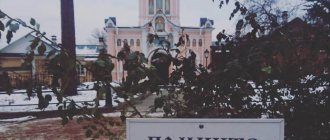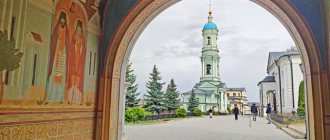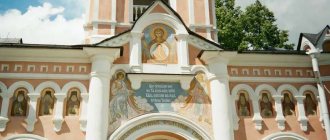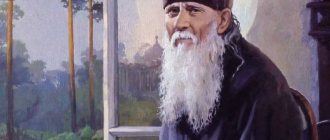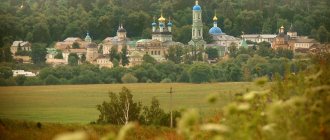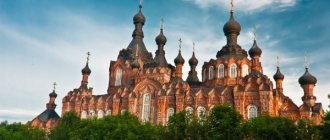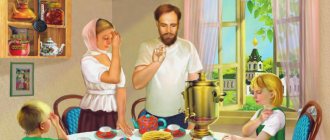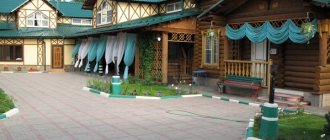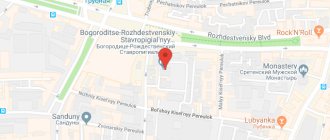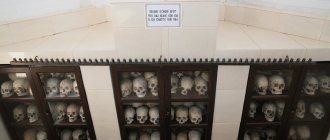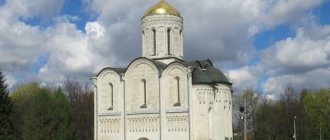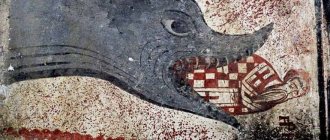The Kaluga region is famous for its many shrines. The most famous is Optina Pustyn, whose history begins in the 14th century. In the 19th century, the monastery became a real correctional shelter for the Russian intelligentsia. Wise confessors - the Optina elders - healed the ailments of the nobles here, lovingly comforting all pilgrims, regardless of their rank and position.
Where is Optina Pustyn located?
The monastery is located two kilometers from Kozelsk, on the banks of the Zhizdra River. They say that after spending several days in these places, a person changes and peace comes into his soul. Hundreds of people travel here every day. This is one of the most revered and prayed places in Orthodox Rus'. People think about where Optina Pustyn is located in moments of despondency, when they are overcome by a feeling of hopelessness. You can get to these places by train. From the Tupik station it is two kilometers to the monastery.
How to get to Optina Pustyn by car, train and bus
By your own car from Moscow to Optina Pustyn, if there are no special traffic jams, you will get there in about 4-4.5 hours. You can drive along the Kievskoye or Kaluga highway, heading to Kozelsk. A slightly longer, but sometimes more comfortable route due to the traffic situation is through Podolsk along the Simferopol highway to Serpukhov and further to Kozelsk. The monastery is located 4 kilometers northeast of this city.
If you don’t have a car, then the most convenient way (but not the cheapest) is this: from the Kievsky railway station in Moscow, get to the Sukhinichi station on the modern comfortable train “Ivan Paristy”: travel time is about 3 hours, ticket cost is about 650 rubles (all prices as of May 2022). You can get from Sukhinichi to Optina Pustyn by taxi: travel time is about an hour, cost is about 800 rubles.
The Ivan Paristy train runs twice a day. If you do not want to be “tied” to a specific time, consider the option of getting to the monastery through Kaluga. Regular trains run to this city approximately once every hour and a half, travel time is about 3 hours, ticket cost is about 500-600 rubles. From Kaluga to Optina Pustyn a taxi will cost 900-1200 rubles.
Another option is the most budget-friendly, but not very convenient: a bus runs from the bus station near the Salaryevo metro station to Kozelsk several times a day. Travel time is just over 5 hours, cost is about 900 rubles. You can get from Kozelsk to the monastery in 10-30 minutes by taxi or bus.
Background
What was previously where Optina Pustyn is located today? The history of the Kozelsky district tells about the Vyatichi tribe who once lived here. The city itself was mentioned for the first time in the chronicle of 1146. In 1238 it was taken by the Tatars. The battle lasted for a month and a half. Almost all the inhabitants of Kozelsk were killed, and two-year-old Prince Vasily, according to legend, drowned in blood.
At the beginning of the 15th century the city passed to Lithuania. After 50 years, the city became part of the Moscow Principality. The date of foundation of Optina Pustyn is unknown. But there is an assumption that previously the monastery was common to monks and nuns.
Wholesale
Optina Pustyn is a monastery located in the Kaluga region. In the old days, places of secluded monastic settlements were called deserts. Optina is a word that comes from the name of a repentant thief. Little is known about this man.
The robber Opta was the formidable leader of a large gang. It is industrial in a dense forest, where the city of Kozelsk is now located. One day, for unknown reasons, an inveterate robber left his gang and took monastic vows. In monasticism he received the name Macarius. That is why the hermitage was called Makaryevskaya in the 14th-15th centuries. It is unknown where the founder of the monastery is buried. Moreover, this story is just one of the legends. There are many blank spots in the history of Optina Pustyn.
Other versions about the founding of the monastery
There are various assumptions about who founded Optina Pustyn. According to one version, it was built in the depths of a dense forest thanks to Prince Vladimir the Brave and his heirs. These places were not suitable for arable farming; in the 14th century they did not belong to anyone. Therefore, according to another version, one day unknown hermits appeared here. They chose the most remote place for their spiritual exploits, far from settlements. These are the versions about the emergence of Optina Pustyn. The history of the monastery is presented below.
XVIII century
Peter's reforms did not have the best effect on the fate of the monastery. The monastery had to pay rent to the state. Funds were needed for the construction of a new capital and the war with the Swedes. By the second decade of the 18th century, the monastery found itself in dire straits. In 1724 it was abolished. The wooden buildings located on its territory fell into disrepair.
Restoration began in 1741. A wooden bell tower and a new temple with two chapels were built here. In 1764, by order of Catherine the Great, the monastery became one of the monasteries of the Krutitsa diocese. Five years later, construction of the cathedral church was completed. According to historical documents, in the seventies there were only two monks.
The position of Optina Hermitage began to change towards the end of the 18th century, when the Metropolitan of Moscow drew attention to the monastery. Already in 1797 there were 12 monks here. In 1799, the monastery became part of the Kaluga diocese.
History of Optina Pustyn
The Vvedensky stauropegial monastery of Optina Pustyn - this is what this monastery is now officially called - is one of the oldest in Russia. It is not known for certain who decided to found it. The sources only mention that the Romanovs donated land to the already existing monastery, and under Peter I, some small deserts, including those near Kozelsk, were abolished. In total, about 500 monasteries were closed throughout Rus' during that period. The Optina monks were transferred to the Transfiguration Monastery in the town of Belev, but after a couple of years the hermitages were reopened, but the brethren had almost no means of subsistence.
The real revival of the monastery began at the end of the 18th century, when Metropolitan Platon of Moscow and Kaluga drew attention to Optina Pustyn, and three decades later the local Bishop of Kaluga (who would later become Metropolitan Philaret of Kyiv) ordered the construction of a monastery there. Optina has become one of the spiritual centers of Russia.
Holy Gates of Optina Hermitage
At the beginning of the 20th century, Optina Pustyn was a large, prosperous monastery. Divine services were held in 6 churches of the monastery and two churches of St. John the Baptist monastery. The library stored about 60 thousand books and manuscripts.
After the revolution in 1918, the monastery was closed. Arrests of the monastery leaders and searches of the monastery's cells began immediately. At first, the Optina Pustyn artel was organized from able-bodied monks, but in 1923 that too was closed. About 300 monks were expelled, some of them were arrested and sent to camps. The lands and barnyard, a herd of cows that previously belonged to the monastery, went to Semkhoz. For some time, a museum was opened on the territory of the monastery, but already in 1927 its activities ceased. The property of the monastery was dismantled by local residents, some of the things were sold at an auction held right on the porch of the cathedral. At the same time, the cemetery was devastated: cast-iron monuments and fences were sent for melting down, marble and granite tombstones were piled up, grave mounds were razed to the ground. Rare books from the collection were sent to Moscow to the Lenin Library, while the rest were taken apart for next to nothing by local residents for household needs.
The buildings of the monastery changed owners many times: they housed communal apartments, a sawmill, a rest home, a concentration camp for Poles, and a military unit. After the war, the buildings, including the monastery wall, began to be dismantled into bricks.
The last Optina monk who lived in the monastery before the revolution died in 1981, just 6 years before the moment when Optina Pustyn was returned to the church. In 1987, the restoration of the monastery began.
Why is Optina Pustyn called so? Everything is simple with a desert - this is how a secluded monastery in a sparsely populated desert area was called from ancient times. Why Optina? The most popular version is that the monastery was founded by a repentant robber named Opta. However, etymologists put forward another version: previously the monastery was common to monks and nuns, they lived there together, that is, “wholesale”, which was permissible until the adoption of the Council Decree of 1503, which introduced the division of monasteries into male and female.
19th century
Optina Pustyn is of considerable importance in Russian history. This monastery is a vivid example of the process of spiritual revival that occurred at the end of the 18th century. It is located at the edge of a pine forest, cut off from the world by Zhizdra. This is an excellent place for a contemplative hermit life, a spiritual oasis. They say that the elders of Optina Pustyn have the gift of healing.
At the beginning of the century, construction of a three-tier bell tower began. Outbuildings for cells were added to it on both sides. In 1804, construction ended. Three years later, construction began on the Kazan Church, and a little later on a hospital church with six cells. Councilor Kamynin allocated funds for construction materials.
The temples were consecrated in 1811. Ten years later, a monastery was established here. Hermits lived in it, that is, people who spent many years in absolute solitude. The elder was in charge of the spiritual life of the monastery. From all corners of Russia, people flocked to Optina Pustyn, striving to live in harmony with God. The monastery became the spiritual center of the country. After donations began to arrive, land, a mill, and stone buildings appeared here.
Russian Orthodox Church
The importance of Optina Pustyn in Russian history is difficult to overestimate. The monastery is a striking example of the process of spiritual revival that arose in Russia at the end of the 18th century.
Situated at the edge of a virgin pine forest, cut off from the world by the Zhizdra River, it was an excellent place for a hermitic contemplative life. It was a wonderful spiritual oasis, where the grace-filled gifts of the first centuries of monasticism were repeated. They - these gifts - received full expression in a special service - eldership. Indeed, the Optina elders were distinguished by the highest of all gifts - the gift of prudence, as well as foresight, the gift of healing and miracles. This ministry is prophetic - just as the prophets did this in apostolic times, so now the elders consoled the suffering and proclaimed the future according to the will of God.
From ancient times, the area where the cities of Kozelsk and Optina Pustyn are located was already inhabited. Thus, archaeological excavations in 1899 discovered Stone Age objects here. In historical times, it was inhabited by the Vyatichi tribes, enlightened by St. Kuksha (victims in Mtsensk in 1213).
The city of Kozelsk was first mentioned in chronicles in 1146. In 1238 it was taken by the Tatars. The city bravely resisted for seven weeks. All residents were killed. According to legend, two-year-old Prince Vasily drowned in blood. The Tatars nicknamed Kozelsk “the evil city.”
At the beginning of the 15th century, Kozelsk passed into the hands of Lithuania, and for half a century passed from hand to hand until it was finally established in Moscow.
The time of Optina's founding is unknown. There is an assumption that it was founded by the monk-loving Prince Vladimir the Brave, or his closest heirs. According to another version, it was founded in ancient times by the repentant robber Opta, who took the name Macarius as a monk, which is why it was called Makaryevskaya. However, a more realistic assumption is that previously the monastery was common to monks and nuns - and those previously bore the name Optina.
It is likely that its founders were unknown hermits who chose for their exploits a remote place in the forest, far from any habitation, near the border fence with Poland, a place inconvenient for arable farming, unnecessary and not owned by anyone. Thus, Optina is one of the most ancient monasteries. It is known that in 1625 Serius was its abbot. In 1630 there was a wooden church, six cells and 12 brethren, and it was ruled by Hieromonk Theodore. Tsar Mikhail Feodorovich granted Optina a mill and land in Kozelsk for vegetable gardens. In 1689, the Shepelev brothers (local boyars) built the Vvedensky Cathedral.
Soon the time of reforms of Peter I came. In 1704, the mill, transportation through Zhizdra and fishing were taken from the treasury, and in 1724, the impoverished monastery was completely abolished by decree of the Synod as a “small monastery.” But already in 1726, at the request of the steward Andrei Shepelev, it was restored. Completely ruined when it closed, it was now slowly recovering. By decree of 1727 the mill was returned to her.
But its complete restoration began only in 1795, when the Moscow Metropolitan Platon drew attention to it and appointed Hieromonk Joseph there as a builder, and a year later Fr. Abraham. Through the efforts of first Metropolitan of Moscow Platon (Levshin), then Bishop of Kaluga Filaret (Amphiteatrov), Optina Pustyn turned, according to Father Pavel Florensky, into “a spiritual sanatorium for many wounded souls,” which quickly attracted the attention of contemporaries.
1796-1829
“In 1796, His Eminence Metropolitan Platon of Moscow, visiting this hermitage, recognized this place as very convenient for hermitage community; that’s why I decided to establish it here, in the image of the Pesnoshsky monastery. And in order to carry out this assumption as successfully as possible, he asked the Pesnosha rector of the builder Macarius to give him a capable person for this, which Hieromonk Abraham was recognized to be. When he came to this place, he found several monastics here, and the building, except for the cathedral church, was all wooden, and even dilapidated, etc.” (From the History of the Russian Hierarchy).
Father Abraham, who had been a gardener before his appointment, introduced exemplary internal order into the monastery, thereby earning himself the respect and respect of the entire surrounding population. As his funds increased, he took up the material maintenance of the monastery, with the help of donations from God-loving citizens. Abraham was both the founder and the architect.
In 1801, “for excellent services to the monastery for the common benefit,” Abraham was promoted to abbot of the Likhvinsky Pokrovsky Good Monastery, with control at the same time in Optina. But soon weakness, as well as fear that the improvement he had established in Optina would not be disrupted, forced Fr. Abrahamia refuses new dignity. The Eminence granted his request, and he was still left in charge only in Optina Pustyn, but already in the rank of abbot.
The year 1797 was memorable for all Russian monasteries due to the merciful attention to them of Emperor Pavel Petrovich. According to the decree of December 18, Optina Pustyn, among others, received 300 rubles a year “for eternity.” In addition, the Desert was granted a flour mill and a pond. This royal favor contributed greatly to the initial improvement of the monastery.
Years passed. Abraham, even at an advanced age, did not abandon his good deed. At the request of His Grace Theophylact, Bishop of Kaluga, the pious monarch (now Alexander Pavlovich) agreed to the request of Father Abraham. Since 1764, it was not allowed to keep more than seven people in Optina, but this sacred monastery attracted many pilgrims. By decree of the Holy Synod, Pustyn is allowed to add twenty-three more people.
Having thus filled the main deficiency in the Optina Hermitage, Abraham did not weaken, but worked and worked, increasing the wealth of his monastery. The favor he deserved from the Kaluga archpastors increased even more. Bishops Evlampy and Eugene showed special favor to Optina Pustyn. His Grace Evlampius even wanted to spend the rest of his days in the monastery, and a special cell was built especially for him.
God judged Fr. Abraham will enjoy the fruits of his endeavors and labors. After the memorable year 1812, when he once again proved himself to be a remarkable abbot worthy of the title of abbot, Fr. Abraham lived for several more years, loved and respected by everyone in the monastery.
Those who took his place were no less than Fr. Abraham cared about the welfare and spiritual life of this monastery. Every year the monastery grew and grew. His influence in the world also grew.
A very important milestone in the history of Optina Monastery was the coming to power of Metropolitan Philaret, who supported the establishment of eldership in the monastery. As a lover of silent desert life, he greatly patronized the desert monastery of Optina, often visiting it, sometimes living (during fasting) for whole weeks. It was he who founded in 1821 a monastery in the desert in the name of St. John the Baptist, the first “new grace” inhabitant of the desert. Filaret called there the hermits from the Roslavl forests - Moses and Anthony, as well as three other monks. These were the forefathers of Paisius Velichkovsky, who saw in eldership the most important way of reviving human souls. In 1829, eldership was introduced in Optina, with the assistance of its then rector, Fr. Moses. Optina Pustyn was the last monastery where eldership was introduced. And it was in this desert that it experienced its heyday.
Optina Pustyn is famous for its care for the poor, orphans, the reception of pilgrims, its schools and hospitals. Divine services at the monastery lasted 8 hours, which, according to Fr. Sergius Chetverikov "university for the Russian people." But what distinguishes Optina from countless similar monasteries is the exceptional influence of its elders.
The eldership in the Kozelskaya Vvedenskaya Optina Hermitage was introduced later than all the eldership monasteries listed above. We know the names of probably all the elders who lived in Optina throughout its short history: Hieroschemamonk Lev (Nagolkin; +1841), Hieroschemamonk Macarius (Ivanov; +1860), Schema-Archimandrite Moses (+1862), Hieroschemamonk Ambrose (Grenkov; +1891 ), Hieromonk Joseph (Litovkin; +1911), Schema-Archimandrite Barsanuphius (Plekhankov; +1913), Hieromonk Anatoly (Zertsalov; +1894), Hieromonk Anatoly (Potapov; +1922), Hieromonk Nektary (+1928).
In our days, their feat was continued by Schema-Archimandrite Sebastian (Fomin; he died on April 19, 1966) who lived in Karaganda.
1830-1861
This is the period of true prosperity of Optina in all respects. The material wealth of the Desert has improved significantly. By 1862, the Optina Brotherhood already extended to 150 people, including 20 hieromonks. But it was not just the external structure of the monastery and the number of brethren that Fr. Archimandrite Moses, former desert dweller of the Roslavl forests. The deanery and duration of church services, all the external and internal orders of Optina Pustyn, its entire current spiritual structure - all this was established and approved under the abbotship of Fr. Moses. With the introduction of eldership, Fr. Moses strengthened the improvement and well-being of Optina Pustyn for future times.
The first elder of Optina was Hieroschemamonk Leonid (in schema Leo, +1841).
Since 1839, Optina Pustyn began publishing generally useful spiritual books, especially patristic writings (in Slavic and Russian translations). The first to work in Optina on the publication of such works were those who lived in the Optina Forerunner Skete, Hieroschemamonk John and monk Porfiry Grigorov.
Hieroschemamonk John, who had previously belonged to the community of schismatics, and therefore knew in detail all their reasonings, trying to atone for his sin, in ten (1839-1849) years wrote and published six books that exposed the wrongness of schismatic “philosophies.”
At the same time as Hieroschemamonk John, another Optina monk, Fr. Porfiry Grigorov published the biographies of some remarkable clergy: schemamonk Theodore, abbot of the Sanaksar monastery Theodore Ushakov, Peter Alekseevich Michurin, the Desert-dweller Bassilisk and others; in addition to that letter from the Zadonsk recluse Georgy, which already had several editions.
But the most active publishing activity began seven years later, in 1846, under the leadership of the famous elder Fr. Makaria (Ivanov, +1860). And again, behind this Godly deed is a wonderful Russian politician and clergyman - Metropolitan Filaret of Moscow.
Hieroschemamonks Leonid and Macarius were disciples of the disciples of the great elder Paisius Velichkovsky, Abbot Anthony and Archimandrite Moses had spiritual communication with his disciples. Therefore, Optina’s publishing works began precisely with this famous Moldavian elder. His biographies were published, and then numerous of his translations, as well as his own writings.
But, with the permission of Metropolitan Philaret, the brethren of Optina Pustyn were engaged not only in publishing translations of Paisius Velichkovsky, but also translated and published the famous works of “the great healers of human souls”: Rev. Barsanuphius the Great and John the Prophet, Abba Dorotheus, Peter Damascene, John Climacus, Isaac the Syrian, Simeon the New Theologian, Theodore the Studite, Anastasius Sunaita, St. John Chrysostom. The books published by the Optina elders guided many generations of Russian people in their spiritual lives.
Metropolitan Philaret of Moscow (Drozdov) and professor of the Moscow Theological Academy Archpriest Theodore Golubinsky, who was the censor of Optina publications, gave a high scientific assessment to these works of the elders of the Optina monastery.
According to the author, Optina’s publishing activity was far from less significant than the spiritual activity of her elders. In our time, and even then, people are not able to go on a pilgrimage, drop everything and leave for the sake of saving their souls. That is why books, especially those of such great and experienced people, are so important in our spiritual education. In addition, a conversation, even with an old man, is a temporary phenomenon, but books, no matter how you look at them, are eternal in comparison with words.
1862-1891
The administration of Abbot Isaac and, in the monastery, the eldership of the hieroschemamonk Fr. Ambrose, whose spiritual influence spread throughout Russia. The time of Ambrose's eldership coincided with the emergence of the intelligentsia in Russia, which came under the influence of rationalistic and materialistic ideas (for example, nihilism), which aimed to achieve justice and happiness of people by changing the political and social system of the country. Many truth-seekers soon became disillusioned with these ideas. O. Ambrose knew how to fill the void in the souls of these people, he could sort out the most confusing states of the human soul, he could give a person hope and meaning to live again.
People simply flocked to Optina. In this blessed monastery, the most prominent people of Russian literature, politics, and clergy received a creative impulse. In 1877 F.M. arrived. Dostoevsky. The surrounding nature, conversations with elders and the atmosphere of love and hospitality that reigned in this monastery prompted him to write “The Brothers Karamazov”. He wrote: “There are so many humble and meek people in monasticism, longing for solitude and fervent prayer in silence. These are pointed out less and even passed over in silence altogether, and how amazed they would be if I said that from these meek and thirsty solitudes, perhaps once again the salvation of the Russian land will come!” He said in an ancient way, not very clearly, but it is clear what, in his opinion, was the hope of the Russian land.
The famous Russian philosopher Vladimir Solovyov also visited the elder, but they did not agree: their understanding of spiritual truths was different, the elder did not approve of Solovyov’s path, but could not convince him. Kostantin Leontyev was an admirer of the elder and spent a lot of time in Optina for his sake. Tolstoy was there three times. A Russian count once came there in bast shoes and with a knapsack over his shoulders. It’s a pity, we don’t know what Fr. said to this. Ambrose. He was skeptical about this - ostentatious appearance without internal content does not bring a person closer to moral perfection. The last time Tolstoy was with his family was in Optina in 1890, a year before the elder’s death.
Optina blessed and helped find the right path for Archimandrite Leonid (Kavelin; +1891), a remarkable Russian archaeographer, head of the Russian Spiritual Mission in Jerusalem, then rector of the New Jerusalem Resurrection Monastery and vicar of the Trinity-Sergius Lavra; as well as priest Pavel Florensky (+1943) - the great Orthodox philosopher and theologian.
Many great elders, pillars of Russian Orthodox Christianity, founded women’s monasteries: Fr. John of Kronstadt, Fr. Barnabas, Fr. Gerasim from Tikhonova Hermitage. O. Ambrose confirms this pattern. He created the Shamordino Kazan Convent, where he spent the last year and a half of his life, strengthening the monastery he created and instructing sisters in monastic service. The old man was sick.
On November 10, 1891, Elder Fr. Ambrose, affectionately known to the common people simply as “Father Abrosim,” died. Thousands of grieving people accompanied his body back to Optina Pustyn, the abode of goodness and love that he had nurtured.
1892-1923
This was a period when religion and Orthodoxy were treated skeptically, even hostilely; therefore, Optina Pustyn seemed to fade into the shadows, they forgot about it, which allowed the Bolsheviks to destroy this God-pleasing monastery without much political harm to themselves. In 1923, the monastery’s churches were officially closed, a sawmill was built in it, and a rest house was built in the monastery.
In 1987, the Holy Vvedenskaya Optina Hermitage experienced its rebirth. On November 17, 1987, the surviving monastery buildings were returned to the Russian Orthodox Church, and on June 3, 1988, services began in the monastery, first in the gate church, and then in the Vvedensky Cathedral.
In 1988, the Monk Ambrose of Optina was glorified by the Local Council of the Russian Orthodox Church (celebrated on October 10 (23). In the Holy Vvedensky Optina Monastery, the holy relics of the venerable elder were found and placed in the Vvedensky Cathedral of the monastery.
On July 26-27, 1996, the remaining thirteen venerable Optina elders were canonized as locally venerated saints of Optina Hermitage, and they established a general Council celebration on October 11 (24). In 2000, they were glorified by the Jubilee Council of Bishops of the Russian Orthodox Church for church-wide veneration.
Every day the monastery is visited by numerous groups of pilgrims. Materials about Optina Hermitage are regularly published in church and secular periodicals. There are radio broadcasts dedicated to the monastery and its history.
Based on materials from the website of the Vvedenskaya Optina Hermitage in Moscow
XX century
In 1918 the monastery was closed. For several years, a rest house was located on its territory. During the Soviet years, there was a dance floor at the graves of the elders for some time. And in 1939, these holy places, by order of Beria, were converted into a concentration camp. Several thousand Polish officers were held here, most of them were sent to Katyn and shot.
At the beginning of the Second World War, the monastery was a hospital, then a NKVD inspection and filtration camp. The government transferred Optina Pustyn to the Russian Orthodox Church in 1987. Restoration began in 1990.
The burial places of the elders were found with great difficulty. The devastation here in the nineties was so depressing that local residents did not believe that Optina Pustyn could be revived.
Architectural ensemble
The main temple of the monastery is the Vvedensky Cathedral. It was founded in 1750. The largest temple on the territory of the monastery is the Church of the Kazan Icon of the Mother of God, built in 1811. In the 2000s, the Church of the Transfiguration of the Lord was erected.
On the territory of the monastery there are also: a temple in honor of the Venerable Mary of Egypt, a bell tower, a chapel, a gate church, a wooden belfry, a fraternal refectory, as well as a bakery, abbot, library, and cell buildings. Some buildings appeared in the 19th century. For example, the cell of Elder Ambrose is located in a wooden hut, which is more than 150 years old. However, the oldest building in Optina Hermitage is the Vvedensky Cathedral.
In Moscow and St. Petersburg there are churches belonging to the monastery. This is the courtyard of the Holy Vvedensky Monastery of Optina Hermitage in Yasenevo (Church of Peter and Paul) and the Church of the Assumption of the Blessed Virgin Mary on Vasilyevsky Island.
Excursion to Optina Pustyn
In front of the entrance to Optina Pustyn there is a fairly large parking lot where you can leave your car. Next, about a couple of hundred meters to the entrance from the barrier to the gate you need to walk. To your left there will be a small grocery store where, among other things, they brew delicious real coffee.
Also on the left you will see a kiosk with monastery products: bread, pies, honey.
Go to the gate: to the right and left of you there will be small neat houses in which the hotel premises are located. Also, the hotel building and the refectory are located near the wall of the monastery to the right of the entrance.
Wall of the Optina Pustyn Monastery
Temples and other buildings on the territory of Optina Pustyn
You will enter Optina Pustyn through the Holy Gates . If women are wearing trousers, they can take skirts here. The monastery's excursion service is located in the same building.
The excursion service operates daily from 8.30 to 17.00. The average duration of the excursion is 1–1.5 hours. The amount of donations depends on the number of excursionists in the group: 150–200 rubles for an adult and 50 rubles for children. It is also possible to conduct individual excursions for small groups (from 1 to 10 people), donations of 2000 rubles. More detailed information and contacts for booking excursions can be found on the official website of Optina Pustyn.
A few steps forward, and on your left there will be a small single-domed Church of the Transfiguration of the Lord . It was built in 2007 in pseudo-Russian style. In the temple, custom prayers with blessing of water are performed daily. The relics of St. Raphael (Sheichenko) rest in it.
Church of the Transfiguration of the Lord and the bell tower of Optina Hermitage
A little ahead on the right rises the austere massive single-domed Church of the Kazan Icon of the Mother of God . The largest temple in Optina Hermitage was built in 1811 and restored in 1996. This was the only church where, from the moment the monastery was closed, the brethren continued to worship until 1923. In the temple, hidden under cover, are the holy relics of the Optina elders Moses, Anthony and Isaac. Nowadays late Liturgy and evening services are celebrated there every day. On Sundays and holidays there are all-night vigils and late Liturgies.
Temple of the Kazan Icon of the Mother of God in Optina Hermitage
Further behind it, on your right side, is the main cathedral of Optina Hermitage. It is dedicated to the Entry of the Blessed Virgin Mary into the Temple . Previously, there was another stone church in its place, but it was dismantled in 1689, and in its place in 1750-1771 a new temple was erected with five domes on high elegant drums in the Russian Baroque style. The cathedral contains the relics of the Optina elders: in the northern aisle - St. Ambrose, in the refectory near the southern wall - St. Nektarios, as well as the especially revered Kazan Icon of the Mother of God. In the Vvedensky Church, the midnight office, early liturgy, requiem service, prayer service with akathist to St. Ambrose are celebrated daily, and on Sundays: early liturgy, prayer service with akathist to St. Ambrose.
Cathedral of the Presentation of the Blessed Virgin Mary into the Temple
You entered Optina Pustyn through the modern Holy Gate, but before the revolution the main entrance was in a different place. On your left, opposite the Vvedensky Cathedral, you will see from the inside another now locked gate, but, unfortunately, you will not be able to look at the long, majestic staircase leading from the bank of the Zhizdra - it has been preserved only in photographs. Previously, pilgrims could only get to the monastery by crossing the river and climbing many steps.
Above this ancient entrance is the gateway Vladimir Church , consecrated in 1988. It became the first place where regular services began to be held after the monastery buildings were returned to the church.
Further on your left is the building of the fraternal refectory , built in 1858, and on your right is the temple of the Venerable Mary of Egypt and the Holy Righteous Anna . Initially, in the 1820s, the refectory for the brethren was located in it, but after another building was erected opposite, a church was built in this building and consecrated in 1858. In the 1880s, on the initiative of Elder Ambrose, the temple was greatly rebuilt: two limits appeared in it. Now part of the temple premises is occupied by a publishing house and an icon-painting workshop.
Temple of St. Mary of Egypt and St. Righteous Anna
Let's go back a little and, having passed the main Vvedensky Cathedral, turn left. There you will see a small belfry . In this place, in 1993, on Easter, two monks Trofim (Tatarnikov) and Ferapont (Pushkarev) were brutally stabbed to death. The killer overtook the third victim, hieromonk Vasily (Roslyakov), not far from the monastery tower.
To the left is the laconic single-domed Church of the Vladimir Icon of the Mother of God . It was built at the end of the last century on the site of a completely destroyed hospital church built in 1809-1811. Now it is a temple-tomb: it contains the holy relics of Saints Leo, Macarius, Hilarion, Anatoly (Zertsalov), Barsanuphius, Anatoly (Potapov), Joseph - discovered in 1998. Confession and a prayer service with an akathist to the Venerable Elders of Optina are held daily in the church.
Temple of the Vladimir Icon of the Mother of God in Optina Hermitage
chapel built in 2008 at the burial site of the Optina brethren killed in 1993. A funeral litany is held there on Saturdays.
The monastery and surroundings of Optina Pustyn
On the east side of the monastery there is the monastery of St. John the Baptist . Coming out of the gate of Optina Hermitage, go along the wall to the left. Soon you will come to a forest with tall, beautiful ancient trees. Follow the path, it will lead you to the Skete. The beginning of hermit-dwelling in the Optina Hermitage was laid by Schemamonk Ioannikiy, who settled in the depths of the forest in a small apiary at the beginning of the 19th century. After his death, several hermit elders from the Roslavl forests moved to this place. They began to equip the monastery.
Ancient engraving: view of the Baptist Skete (source https://www.optina.ru)
What the Skete looked like before the revolution can be easily imagined by reading how F. M. Dostoevsky described the monastery in The Brothers Karamazov: “A small pink bell tower made of brick towered above the gates; on both sides, outside the fence, there were “huts” - a kind of reception room where the elders went to talk with women: they were forbidden to enter the monastery. Silence reigned within him. It was a beautiful garden, full of colorful flowers growing around the church and cells. In such an environment, the Russian elders cultivated their best spiritual fruits for almost a century.”
Not far from the entrance to the monastery, to the right you will notice the Ambrose Well . According to legend, it was dug up with the blessing of Elder Ambrose, at the place he indicated. The source was consecrated in honor of Saint Ambrose of Milan, the heavenly patron of the venerable elder. Before the revolution, religious processions were made to this well from the Skete, and the water in it was blessed. There are several descriptions of miraculous healings.
After the revolution, the well continued to be used by laymen who settled on the territory of the Skete. When the monks returned to the monastery, they re-consecrated the Ambrose Well and, using pre-revolutionary photographs, restored its appearance.
Ambrose Well at the Skete of St. John the Baptist
Previously, pilgrims could get to the Skete only on patronal feast days four times a year. However, recently, by decision of the patriarch, access to the Skete was closed to the laity.
Skete of St. John the Baptist
On the territory of the Skete there are two churches: the temple of St. John the Baptist and the Baptist of the Lord and the temple of St. Leo of Catania and St. John of Rila .
Elders
Optina Pustyn is, first of all, its elders. There are only fourteen of them today. What is the essence of old age? A more experienced one is selected from among the monks, who becomes the spiritual father of all the brethren. He also becomes a mentor for the laity who come here. Between the Kazan Church and the Vvedensky Cathedral there is a necropolis. Clergymen are buried here. And it is in this part of the desert that the graves of the Optina elders are located. However, they are empty - the relics of the saints were transferred to shrines.
Each of the elders became famous for something. Nectarius was a predictor. Leo is a healer. The most famous was the third elder of Optina Pustyn - Ambrose. Not long ago his cell was restored in the monastery. Entry for lay people is closed here.
The architecture of the temple and its interior decoration
Today the Vvedensky Cathedral welcomes guests of Optina Pustyn in all its splendor. It is built of brick, has the shape of a cross and occupies a central place in the monastery. To the east of it there is a small monastery cemetery.
The main two-light volume is crowned with an elegant five-domed structure. The central, more massive onion-shaped dome is gilded and is visible from everywhere even on cloudy days. The four chapters surrounding it are painted dark blue and decorated with glittering gold stars. All five domes end with openwork gilded crosses.
Numerous reconstructions have made the cathedral's architecture quite eclectic. From the south and north, the temple has strict classical porticoes with triangular pediments and slender columns. A massive porch leads into it from the west, similar to the work of Tuscan architects, and the domes raised on thin drums are reminiscent of the best traditions of the Baroque.
Hieroschemamonk Ambrose
He was canonized in 1988. Reverend Ambrose, known in the world as Alexander Mikhailovich Grenkov, had a phenomenal memory, wrote and spoke fluently in five foreign languages. Since childhood, he was distinguished by extraordinary abilities, but in his youth he became very ill and then made a vow to God: if I survive, I will become a monk. Alexander Grenkov has recovered. He chose Optina Pustyn for his ministry.
The Monk Ambrose knew how to speak to everyone in their own language: to help an illiterate peasant woman, to give advice to a wealthy landowner. This man communicated with Leo Tolstoy and Fyodor Dostoevsky. Conversations with the elder took place in a special room. The furnishings of this room are completely preserved today. Asceticism reigns here, although the elder received here not only famous writers, but also representatives of the royal Romanov family.
Leo Tolstoy came to Optina Pustyn six times. For the first time - in 1878. A long, difficult conversation then took place between Ambrose and Tolstoy. After the writer’s departure, the elder said: “I’m very proud.” There is information that Tolstoy came here just before his death; he wanted to visit Ambrose, but did not dare to enter the monastery.
Fyodor Dostoevsky came to Optina Pustyn after a heavy loss - the death of his little son. The writer could not understand why God needed the death of an angelic boy. He suffered a lot. Arriving at the monastery, Fyodor Mikhailovich talked for a long time with Elder Ambrose. According to eyewitnesses, he left his cell as a completely different person. Elder Ambrose is the prototype of Zosima from the novel The Brothers Karamazov.
Optina elders
Hieroschemamonk Leo
Hieroschemamonk Leo the first Elder of Optina. For many years the Monk Leo had to wander from monastery to monastery, enduring deprivation and slander. And only at the age of 61 he arrived in Optina Pustyn, having by that time become an experienced spiritual father, whose faith in God and love for people knew no bounds. The elder performed many miracles during his lifetime and continues to perform at the prayer requests of believers even after his death.
Hieroschemamonk Macarius
Hieroschemamonk Macarius was a disciple of Elder Leo. He was very tall and ugly, but at the same time his face and eyes always shone with humility. He dressed very poorly, had an excellent memory, and was perspicacious, calling laymen unfamiliar to him by name. In every minute free from prayers and meetings, he wrote letters in which he analyzed difficult life situations and guided him on the path of salvation. I tried to instill humility in people. “If there is humility, everything is there, if there is no humility, there is nothing,” said the elder. Under him, books began to be published in Optina Desert.
Schema-Archimandrite Moses and Schema-Abbot Anthony
Schema-Archimandrite Moses and Schema-Abbot Anthony were siblings who showed a true example of love and spiritual kinship. It was under them that eldership flourished in all its splendor. Father Moses was famous for his ascetic life, he was very meek and humble, but at the same time he wisely ruled the Desert. Under him, new churches were built and charitable work was carried out. During the eldership of Moses, the Optina Pustyn monastery flourished.
Elder Anthony, who spent 14 years in the monastery, was seriously ill, but humbly accepted his weakness.
Hieroschemamonk Hilarion
Hieroschemamonk Hilarion is a disciple of Elder Macarius. He had such a gift of influence on a person that he, feeling the presence of God’s grace, confessed his sins to the elder with all frankness. He could heal the most complex mental illnesses, and returned Christians who had fallen away from it to the Orthodox faith.
Hieroschemamonk Ambrose
Hieroschemamonk Ambrose is the most famous of the Optina elders. He was unusually smart and had a phenomenal memory. His love for people knew no bounds; it is not surprising that the people loved and revered the elder. He accepted everyone: both ordinary laymen and persons of royal blood. Leo Tolstoy came to him 6 times, after conversations with whom the elder was found exhausted, this communication was so difficult for him. Fyodor Dostoevsky, who lost his son at that time, also came to Father Ambrose. His letters still have great spiritual value today. Founded the Shamordino convent. Elder Ambrose was canonized in 1988, the first of all the Optina saints.
Hieroschemamonk Anatoly
Hieroschemamonk Anatoly , a sensitive and wise mentor and man of prayer, could console any despairing person. He took care not only of the spiritual life of the monks, but also of their everyday needs.
St. Anatoly on acquiring humility: “I tell you the best way to acquire humility. This is this: endure every pain that pricks a proud heart... Start like this and you will see... The main thing is that you don’t understand that this pain, this sharpest sting that pricks the sensitivity of the heart, is the real source of God’s mercies and humility."
Schema-Archimandrite Isaac
Schema-Archimandrite Isaac strove to preserve the previously established rules and regulations in Optina Pustina, and was distinguished by his simplicity and responsiveness. Any suffering person could come to his cell and receive advice and consolation. The monk died quietly, surrounded by crying children.
Hieroschemamonk Joseph
Hieroschemamonk Joseph is a disciple of Elder Ambrose. He was distinguished by extraordinary humility and unceasing prayer. All his conversations with people were short, he was able to give a comprehensive answer briefly, literally in a few words. The sufferers who came to him felt the incredible power of his prayers and noted the radiance emanating from his face. Despite his serious illnesses, he strictly fulfilled all fasts and wore shabby and very simple clothes.
Schema-Archimandrite Barsanuphius
Schema-Archimandrite Barsanuphius turned from an officer with a brilliant career into a perspicacious elder. Many events and thoughts of those suffering who came to him were revealed to him by God.
During confession it was impossible to hide a single sin from him. The elder did not rule the monastery for long. Before his death, Father Barsanuphius became seriously ill and experienced severe pain. He refused medical help and only said: “Leave me alone, I’m already on the cross...” But despite his serious illness, the elder did not stop praying for a minute and took communion every day.
Hieroschemamonk Anatoly II
Hieroschemamonk Anatoly II healed the sick, consoled the despondent, and gave wise advice to the suffering. The elder paid special attention to confessing the sins of people who came to him, while praying fervently. The penitents knew that it was impossible to hide a single sin from the spiritual gaze of Father Anatoly. After confession, he gave instructions that always amazed with their accuracy and insight.
Hieroschemamonk Nektariy
Hieroschemamonk Nektarios is the last conciliarly elected elder. He hid his gifts of clairvoyance and miracle-working behind a mask of foolishness. He consoled believers who were persecuted for their faith by the Soviet regime. Through the prayers of the elder, people who turn to him for help get out of the most difficult life situations.
Hieromonk Nikon
Hieromonk Nikon continued to serve as an elder after the closure of the Optina Hermitage. In his diary he wrote: “I will die, but I will not leave.” The Monk Nikon did everything possible to preserve the monastery. In such difficult times for believers, people came to him for consolation and words of support. In June 1927, Elder Nikon was arrested. Died in exile.
Archimandrite Isaac II
Archimandrite Isaac II suffered severe trials: before his eyes the monastery was closed and destroyed. The last Optina elder courageously carried his cross, encouraging and comforting Christians who were suffering and persecuted by the Soviet regime. He was arrested four times. The day after the Nativity of Christ, January 8, 1938, he was shot.
Archimandrite Barsanuphius
The future clergyman, Pavel Plikhankov, was born in Samara in 1845, into a merchant family. He graduated from a military gymnasium, after which he made a good career. He rose to the rank of colonel. However, unexpectedly for his relatives and colleagues, Plikhankov submitted his resignation in the 70s. He arrived in Optina Pustyn in 1891. In 1907 he was elevated to the rank of abbot. Five years later, the Monk Barsanuphius was appointed rector of the Staro-Golutvinsky monastery.
The elder was in Optina Pustyn just at the time when Leo Tolstoy arrived there. As already mentioned, the writer visited these places on the eve of his death. Having learned about this, Barsanuphius went to the railway station in order to admonish Tolstoy before his death and help him reconcile with the church. But he was not allowed to see the dying writer.
Nectary Optinsky
Nikolai Tikhonov was born in Yelets in 1853. The family was poor, the father worked at a mill and died early. Soon the mother also passed away. The boy was left an orphan. At the age of eleven he entered the service of a merchant's shop, and six years later received the position of junior clerk.
At the age of twenty, Nikolai went on foot to Optina Pustyn. Here Elder Ambrose received him. They talked for a long time, but about what, Nektary later did not tell anyone. In March 1887 he was tonsured into the robe. Seven years later he was ordained hierodeacon.
Two years before the outbreak of World War I, the brothers elected Nektarios as an elder. After the arrival of Soviet power, the monastery was closed. The Monk Nektarios was arrested. He spent three years in prison. It is known that after his return he lived in the village of Ulyanovo, Kaluga region. Died in 1928.
Current state of the cathedral and visiting hours
Today the cathedral is a functioning Orthodox church. Its main altar is dedicated to the Entry of the Most Holy Theotokos into the temple, the southern one is consecrated in honor of Nicholas the Pleasant, and the northern one in honor of the Monk Ambrose.
View of the domes of the Vvedensky Cathedral
The temple is open for tourists and pilgrims from 8.00 to 19.00. Church services in the cathedral are held daily. On weekdays: at 5.00 - brotherly prayer, at 9.40 - hours and at 10.00 - late Liturgy. On Sundays at 8.00 am the church holds Akathist and Conciliar prayer and at 13.00 - Akathist.
The relics of two holy Optina elders are kept here - the Venerable Ambrose (1812-1891) and Nektarios (1853-1928). In addition, believers come to the cathedral to venerate the revered icon of the Kazan Mother of God.
Attraction rating:
Rating 5.00 [2 vote(s)]
| ← DESERT | KALUGA REGION | RUSSIA → |
Schema-Archimandrite Iliy
Optina elders - who are they, why did people from different parts of the country try to get an “appointment” with them? These are people who have some kind of spiritual vision.
Schema-Archimandrite Eli (Alexey Nozdrin) has such vision, according to the monks of Optina Pustyn. Now he lives in Peredelkino and is the personal confessor of Patriarch Kirill of Moscow. When the elder was in the Optina Hermitage, people continuously came to him. He didn't accept everyone. But if a person was lucky enough to talk with Elder Eli, he could receive completely unexpected advice from him. For example, leaving a business, adopting a child from an orphanage, or even joining a monastery.
Alexey Afanasyevich Nozdrin - that was his name in the world. He was born in 1932 into a peasant family. In 1949 he graduated from school. While serving in the army, he joined the Komsomol, but upon returning home, he repented of his actions and burned his Komsomol card.
In 1958, Nozdrin graduated from a technical school in the Moscow region. Then he worked at a factory in the city of Kamyshin. There was only one temple here, which the future clergyman visited. Nozdrin, on the advice of his confessor, graduated from the Leningrad Theological Academy. In 1966 he was tonsured a monk. At the end of the eighties, he was sent to Optina Pustyn, where at that time the restoration of the monastery began.
God listens to the obedient
Why is it so important for us to know and preserve the experience of the elders?
Because whoever is his own adviser is his own enemy. Father John (Krestyankin) told me: “Read the books of the Optina elders: in them you will find answers to all your spiritual questions.” After all, it is important for us to have the opinion of the holy fathers and apply it in a given situation, and not act from our own mind. What remains are the works of the elders, their letters, testimonies about their lives - much has now been published, and salvation, as we know, lies largely in advice.
How do you see the phenomenon of senility?
The following words could be written on the gravestone of many people: they lived and did not know why they lived. The Optina elders knew what they lived for. They knew, perhaps, a little, but they knew almost everything about the main thing, and this knowledge about the main thing is spiritual genius. What is eldership? – This is spiritual genius. What is genius? – It’s 90% labor and 10% inspiration from above. All this did not arise out of nowhere. God listens to the obedient. Each of the elders was a student at one time. It is better to be called a disciple of a disciple than to collect the useless fruits of self-will. And for this discipleship, for sincere obedience, the Lord gave them gifts, which they themselves later shared: the gift of healing, the gift of vision of spiritual life... (Note: and the worst thing is the imitation of such a gift. When people who do not have this gift acted like this, as if they had this gift - they guided a person without seeing God’s will for him.)
Elder Ambrose used to hesitate in answering the question asked of him: “But I haven’t heard yet.” That is, each of the Optina elders sought to hear the will of God. Each of them was obedient. And God listens to the obedient.
Was Elder Ambrose's teacher the Monk Leo?
Elder Leo, who called him a chimera, a barren flower, but this was already a feature of Elder Leo. He loved him endlessly and reproached him for spiritual benefit, knowing that he could bear it.
“For a monk, reproach and moralizing are the same as a brush for rusty iron,” said Elder Ambrose. Elder Leo did this out of love. “And he diligently removed the rust from me,” recalled Elder Ambrose.
Which of the Optina elders is closest to you?
Probably Leo, Macarius, Ambrose, Barsanuphius. But in terms of character, they are probably Barsanuphius and Leo.
Tragedy of 1993
On Easter, three clergy were killed near the belfry in Optina Hermitage. Hieromonk Vasily and the monks Trofim and Ferapont became victims of a ritual crime. The killer snuck up from behind and stabbed them in the back. He was quickly detained, during the investigation he was declared insane and placed in a closed hospital.
The murdered monks became new martyrs. In 2004, the book “Red Easter” by Nina Pavlova was published, dedicated to the victims of a crazy sectarian-Satanist (three sixes were scratched on the dagger with which he struck).
For the mothers of the fathers of Optina Pustyn, the inclusion of their sons as martyrs was not a consolation. Two of them took monastic vows after this tragedy. Father Vasily’s mother said before being tonsured: “I want to meet my son after death.” The monks were buried on the territory of the monastery. A bell tower was later built on their graves. They say that this place has extraordinary healing powers.
Murdered monks
On Easter 1993, a tragedy occurred at the monastery. After the night Easter service, the monks Trofim and Ferapont went to the belfry to glorify God and ring the bells. At this time, Nikolai Averin crept up on them and inflicted mortal wounds. The same fate awaited Hieromonk Vasily: the killer, with a sword on which 666 was scratched, killed him too.
Based on some details, it is assumed that the murder was ritual in nature. The brothers were buried at the eastern wall of the monastery, a little later a chapel was built over the graves, and almost immediately the pilgrimage of believers began here. The murdered monks of Optina Hermitage set an example for all Orthodox Christians of the strength of faith and fortitude of spirit.
Read us conveniently on social networks:
Tags: Optina Pustyn Monastery, Optina Pustyn Monastery, Optina Pustyn Monastery where is it located
Workers
Many who come to Optina Pustyn stay here for a while. They are housed and fed for free. But on condition: they are obliged to work and attend all services. They say that staying in these holy places heals the soul.
Among the workers are representatives of various professions. The conditions of stay in Optina Pustyn are the same for everyone. Wake up at five in the morning. Worship takes about four hours a day. The rest of the time you have to work. Workers are accommodated in a special hotel, with several people living in each room. In order to settle in, you need a passport and work clothes. Everything else is given out at the monastery if necessary.
The monastery is completely self-sufficient. The workers work together with the monks. The subsidiary farm of this monastery is one of the largest agricultural enterprises in the Kaluga region. Each of the workers has some kind of profession in the world. The monastery tries to offer them work that is familiar to them. Veterinarians care for animals. Artists paint icons.
In the summer, the brothers go out to sow crops. But even here they are not exempted from worship - a special mobile church travels with them.
Workers have almost no free time. They must abide by the strict rules of the monastery. However, some live here for years. There are also those who do not leave at all and are preparing for monasticism.
Attractions
Coming here, you will certainly be able to discover something new and special. Pilgrimage is carried out from all regions of our country. The most important architectural monuments are concentrated here. The exceptional, ancient heritage of Russian culture is definitely worth seeing with your own eyes. Currently there are about a hundred inhabitants. The surrounding area is quiet and filled with mystery. Beautiful at any time of the year.
holy gate
On the southern part of the fence there is the Holy Gate. This is a magnificent structure, consisting of two spans, which are equipped with metal panels. The structure is supported by two pillars, which is decorated with spectacular stucco moldings with elegant flowers. At the top point there is a cornice framed with tiles of various shades. The construction is completed with two tents mounted on bronze octagons. Suzdal architects Greznov, Mamin and Shmakov worked on the project. At the same time, a gatehouse was created, consisting of a high-rise building with eight sides. Over time, the town planning function of the object disappeared. Today it is a magnificent architectural monument that attracts tourists from different parts of the world. Here you can feel the mysterious energy force of past years.
Forest of the Elders
This cozy and mysterious corner is famous for its large number of different animals and plants. Has great majestic power. Arriving here, you can immerse yourself in silence, echoing the singing of birds. This is a great solution to take a break from the bustle of the city. The plantings are landscaped and regularly maintained.
The very concept of “elderhood” differs from the traditional one by special properties. The fact is that throughout the history of Christianity, this category included monks, to whom young novices came into their care. In addition, these people took care of the mental state of the laity, possessing the gift of insight.
The most strict faster was Fr. Moses. He had reverent feelings for humanity, showed compassion for sinful acts, knew how to adapt to the different needs of everyone, was characterized by amazing humility, and was not afraid of hard work.
Holy spring
There is a holy spring in the village. The lighting was done in honor of the Monk Paphnutius. Nearby there is a chapel made of wood, the roof of which is covered with metal. The inputs are characterized by a symmetrical arrangement. The dome is mounted on a high drum. There is a cross at the top point. Sacred images are kept in the room. The building was once destroyed by meltwater, but was restored again.
For a long time, the plot of land was in a neglected state. During the revolutionary period the place was subject to attacks. But believers did not stop preserving their memory. After the resumption of the Orthodox function, a bathhouse was built, and the tradition of ancient religious processions was revived. Every year, on May 14, the water is illuminated. When coming here, do not forget to take a container with you to collect healing liquid.
Chapel of the Resurrection of Christ
This is an integral element of the overall ensemble, which was erected in 2008. Construction work was carried out on the site where the murdered clergy were once buried. They once suffered at the hands of ill-wishers during Easter week. The building is operational and is located in the south-eastern zone. Liturgies are organized constantly. Many people come here in difficult life situations.
Bell tower
This element of the monastery deserves your special attention. The installation process took several years. It is implemented in the style of classicism and consists of four floors. The lower tier is distinguished by its cubic shape. Each floor smoothly transforms into a cylinder shape. The final step is the attic section where the dial tent is built in. A cross is installed a little higher. Two fraternal corps are also attached. The total height is 64 meters. On the very first tier is the holy gate. A staircase was previously provided. But it was destroyed and later not reconstructed.
Stable
A separate room for horses was built in 1898. During this time period, many significant events occurred. The territory has undergone large-scale transformations. An impressive number of farm sheds, sheds, and storerooms appeared. The lands expanded. The inhabitants of the earth tried to provide for themselves. Horses are unique animals that can help out in everyday life. The animals are well cared for and you can interact with them personally.
House of St. Ambrose
Walking through these places, you will be able to become more deeply immersed in the episodes of the books of Russian literature you have read. One of the architectural monuments is the house of Ambrose. This is a fairly compact, well-kept, one-story building with a wooden fence built around it. The outside walls are covered with plaster; inside there are only two rooms. The interior is characterized by simplicity and neatness. Due to the large number of windows, the rooms are bright. Broad-leaved trees are planted nearby to provide shelter from the heat.
Economical service
This service is intended to resolve issues of everyday life and accommodation for pilgrims. Visitors are checked in almost every day. To resolve this issue, it is enough to present your passport. Payment is acceptable. One room can accommodate approximately eight guests. Moreover, free placement is allowed. In return, you will need to take an active part in housekeeping. And if you want a more upscale service, you can use a room for one person. The cost is reasonable.
Interesting Facts
The architectural ensemble is presented in the form of a majestic white Kremlin with seven towers. It is noteworthy that before the October Revolution, about 1000 similar creations were in operation in our country. However, the flow of pilgrims rushed mainly here. Famous personalities often stopped here to relax, find themselves, and create creative activities. Even the personal physician of Emperor Nicholas II, A.V., once stayed here. Kazansky. He subsequently treated all those in need. In 1927, Marshal G.K. visited. Zhukov and G.M. Malenkov. Somewhat later, the head of the USSR Council of Ministers visited the region.
If you are planning to come to Optina, it is recommended to devote at least three days to your walk. Although, even this time may seem insufficient. In the first days of your stay, you can turn to the elders and ask for their blessing. If you wish, you can settle down in a cell for rest. It is interesting that the liturgy here lasts up to five hours, possibly longer. On the second day, many guests prefer to confess and cleanse themselves. It is also recommended to take a fascinating forest walk. The air is unusually fresh. A measured monastic life evokes peace and tranquility. Following the Liturgy, be sure to stop by the souvenir shop to pick up some memorable souvenirs. The sunset that forms over the river is especially mesmerizing.
The spiritual sanatorium attracts not only Russian, but also foreign tourists. Rumor has it that a famous African princess wanted to come here with her retinue. She was received with honor and left a lot of positive feedback. Previously, pilgrims spent the night right on the floor of the monastery. The mattresses were laid out directly on the floor. Today is the century of modernity. A pilgrim hotel has been organized. Accommodation is quite affordable. During the holiday months it is quite a crowded place. Therefore, take into account that there may be difficulties with overnight accommodation. It is advisable to call in advance and clarify this issue.
There are no grocery stores in the village. Various tents appear periodically. Visitors buy sweets, drinks, and souvenirs. If you prefer a certain food, it is preferable to bring it with you. True, there is also a small teahouse. You can always buy something tasty here - tea, pies, buns. When making an Orthodox trip here, try to adhere to the rules and treat others tolerantly.
In the vicinity of the monastery
Today, a whole village has lined up around the monastery. In the nineties, a small house in the vicinity of the monastery could be bought for only 50 thousand rubles. Today prices have increased approximately twentyfold. Among the residents of nearby villages, there are many who purchased houses here solely because of the proximity of the Optina Pustyn. Many villagers host those wishing to visit the famous monastery. The cost of renting housing is low - from 300 rubles per bed.
Optina Pustyn is surrounded by forest, villages and healing springs. Six hundred meters from the monastery there is the spring of Paphnutius Borovsky, which has long been considered healing. Thousands of pilgrims come here every year. They say that the spring really cures ailments.
